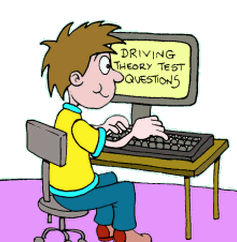When you must not stop when driving
The regulations relating to stopping article looks at when you must stop, now it is time to look at when you must not stop as a driver...
There are times when you need to stop, but also many times where you must not stop, for instance certain places and at certain road markings.
Can you think of a number of places where you must not stop on the road? Before reading on try to come up with a list and see how many you can come up with, you will find it an interesting exercise to do so.
Generally it is a case that you can't stop or park in various scenarios, and these include the following:
- Infront of someone's driveway
- On double yellow lines
- By a road sign telling you not to stop
- Anywhere that parking would cause danger to other road users
- Anywhere that would make it hard for otheres to see
- Anywhere that would narrow the road significantly
- Anywhere that would hold up traffic
- Covering most entrance and exits that other vehicles require, for instance particularly anywhere an emergency vehicle might stop, enter or exit from
- Anywhere it is not permitted to stop, for instance at certain times on many residential roads etc
- Private premises that are not your own or are, for instance, for customers of a company only
Although a lot of it is common sense you will see drivers stop in all sorts of weird and wonderful or not so wonderful places, so always show consideration for other road users when parking and stopping and obey the rules of the road: and if you park in a restricted parking zone or somewhere that requires a ticket without one, then you can expect a hefty fine or worse - clamping!
Related Articles...
What to do with keep clear markings
Keep clear markings are quite straightforward to understand, although amazingly some people either ignore them or do not appear to understand what they mean!
You will often seen keep clear...
Driving Theory Stopping Distances
Stopping distances refer to the distance that you car is going to travel from the time that you decide that you need to press the brake through the time that the vehicle physically stops...
Taking the theory test if you don't speak English
Not everyone who takes the Driving Theory Test will be confident enough in their ability to speak and understand English to take the test. Whilst some people in Wales will want to take the test in...
Road Tax Disc Explained
You might hear to this referred as to something called excise licence, but in common parlance (speech!) this is called road tax.
And you will have a circular piece of paper that comes to show...
Tips on passing your theory test
It is up to each individual who takes a theory test to do the necessary work and preparation to put themselves in the best position to pass the test.
Rather than attempting to 'cram' the night...
Driving and Eyesight Requirements
If you require glasses in order to meet the requirements for driving legally, then you must ensure that you wear them whilst you drive (or corrective lenses).
There are some conditions that...
Risks when driving: bright or low sun
When the sun is low and bright, it can be very hard indeed to drive. This is because we may have to squint and the bright light can make it hard to pick out objects and to see, sometimes right in...
Regular car checks to perform
In addition to the daily checks that you should perform on core elements of your car such as the tyres (see article entitled 'what to check on your car daily') there are various other elements that...
Towing a load such as a caravan
When you tow a vehicle such as a caravan, it is clearly the case that driving conditions will be very different, and much more so again than simply having a heavier load or having a roof rack...
Being aware of potential hazards
Having the maximum time possible to react to hazards is important and can be the difference between an awkward situation or even an accident and continuing safe driving.
This requires you not...
Back to home page of driving theory test questions

